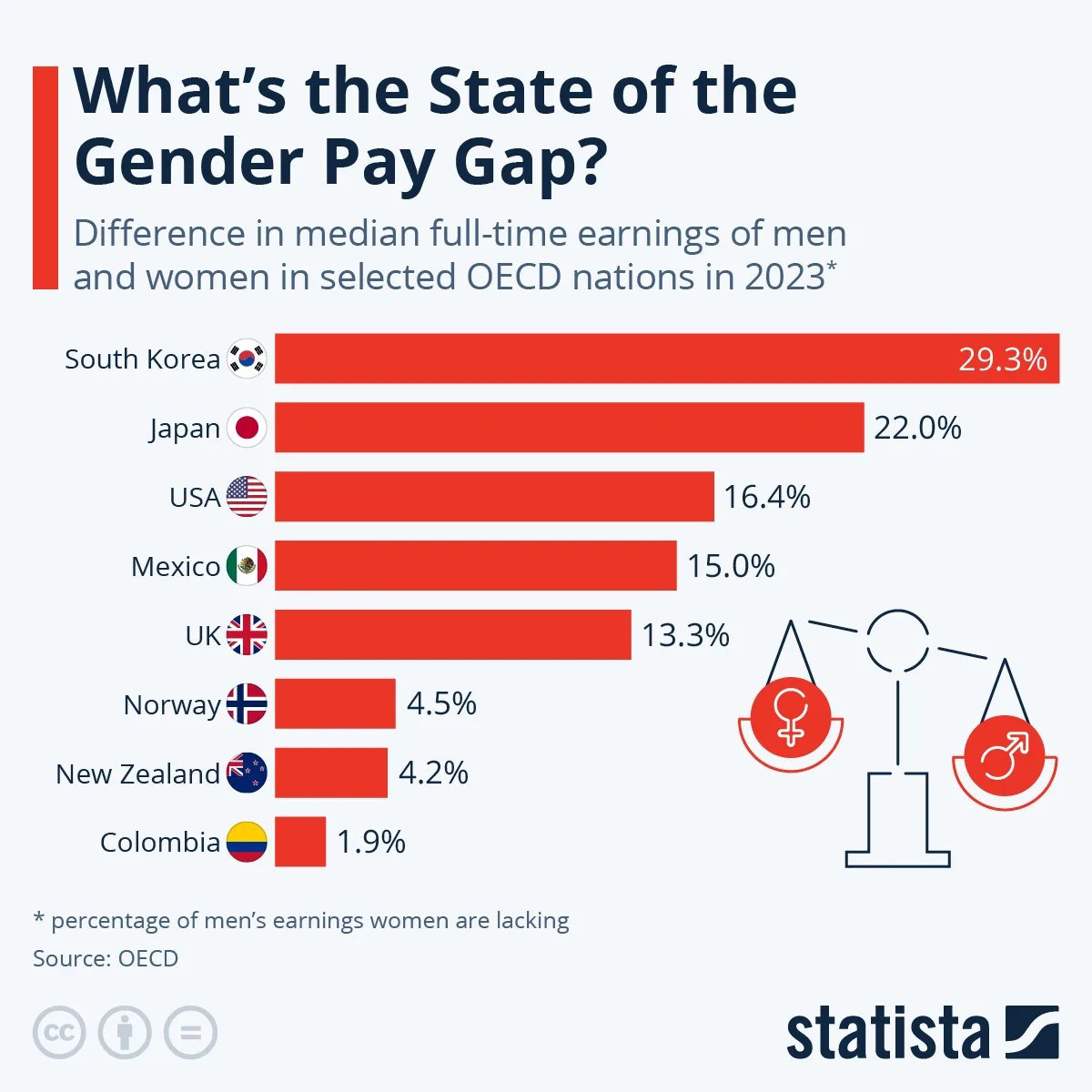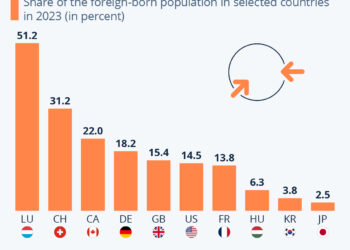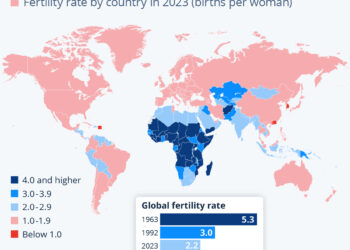Understanding the Gender Pay Gap: A Global Perspective
The gender pay gap is a critical issue impacting economies worldwide, defining disparities in wages earned by men and women for similar work. This blog delves into the recent findings on this phenomenon, drawing on the latest data to illustrate where we currently stand in the quest for equality in the workplace.
The Current Landscape of the Gender Pay Gap
Recent statistics shed light on the gender pay gap globally, with varying degrees of disparity across different countries. According to the OECD, South Korea emerged as a country with a significant struggle in this area, showcasing the largest gender wage gap among developed nations.
South Korea: A Deep Divide
In 2023, South Korean male workers earned approximately 29.3% more than their female counterparts, highlighting a stark contrast in earnings. This discrepancy points to systemic issues that have persisted within the workforce, reflecting broader cultural and societal norms that impact women’s employment opportunities and income potential.
Trend Analysis: Japan’s Gender Pay Gap
Following closely behind South Korea is Japan, where the gender pay gap has been reported at 22.0% in 2023. This gap signals ongoing challenges in achieving parity, even in a region known for its economic advancements. Cultural factors, workplace structures, and gender norms continue to contribute to this disparity, making it a concern that requires further examination and policy intervention.
North America: A Moderate Gap
Turning our focus to North America, the United States displays a gender pay gap of roughly 16%. While this figure is better than that of South Korea and Japan, it highlights significant room for improvement. Notably, limited data from 2023, coupled with the 2022 OECD average of approximately 11%, suggests an ongoing issue wherein women frequently find themselves in lower-paid or part-time positions.
The Dynamics of Employment
One of the central contributors to the gender pay gap is the distribution of women in lower-paying jobs. This trend indicates that women are often engaged in roles that are under-appreciated in terms of compensation but are essential for societal functioning—such as healthcare, education, and administrative positions. In contrast, men tend to occupy higher-paid roles or those linked with economic volatility, such as manufacturing.
The Impact of Economic Conditions
An interesting phenomenon arises when considering economic downturns. When crises hit, competitive and higher-paid positions traditionally held by men can vanish. In some cases, this leads to women out-earning men as they find stable employment in essential services. This observation points to the necessity for a nuanced understanding of the gender pay gap—while disparities may suggest an issue of inequality, they can also reflect broader economic challenges.
Profiles of Progress: New Zealand’s Achievement
Among highly developed nations, New Zealand stands out as a positive example with a minimal gender pay gap of just 4.2%. This relatively low figure indicates successful interventions and progressive policies aimed at promoting gender wage equality. Understanding how New Zealand achieved this could offer valuable lessons to other countries grappling with larger gaps.
Broader Implications: The Need for Action
The evidence suggests a complex interplay of social, economic, and cultural factors driving the gender pay gap. This issue extends beyond mere statistics; it represents a significant challenge to achieving true workplace equality. Continued dialogue, research, and active policy measures are necessary to close these gaps and create a fairer economic landscape for all workers.
Conclusion
The gender pay gap remains a pressing global concern, marked by significant variations between different regions and countries. Understanding these dynamics is crucial as we strive for a more equitable future in the workforce. Formulating targeted strategies and policies can help mitigate disparities, leading toward enhanced economic stability and fairness for everyone involved.





